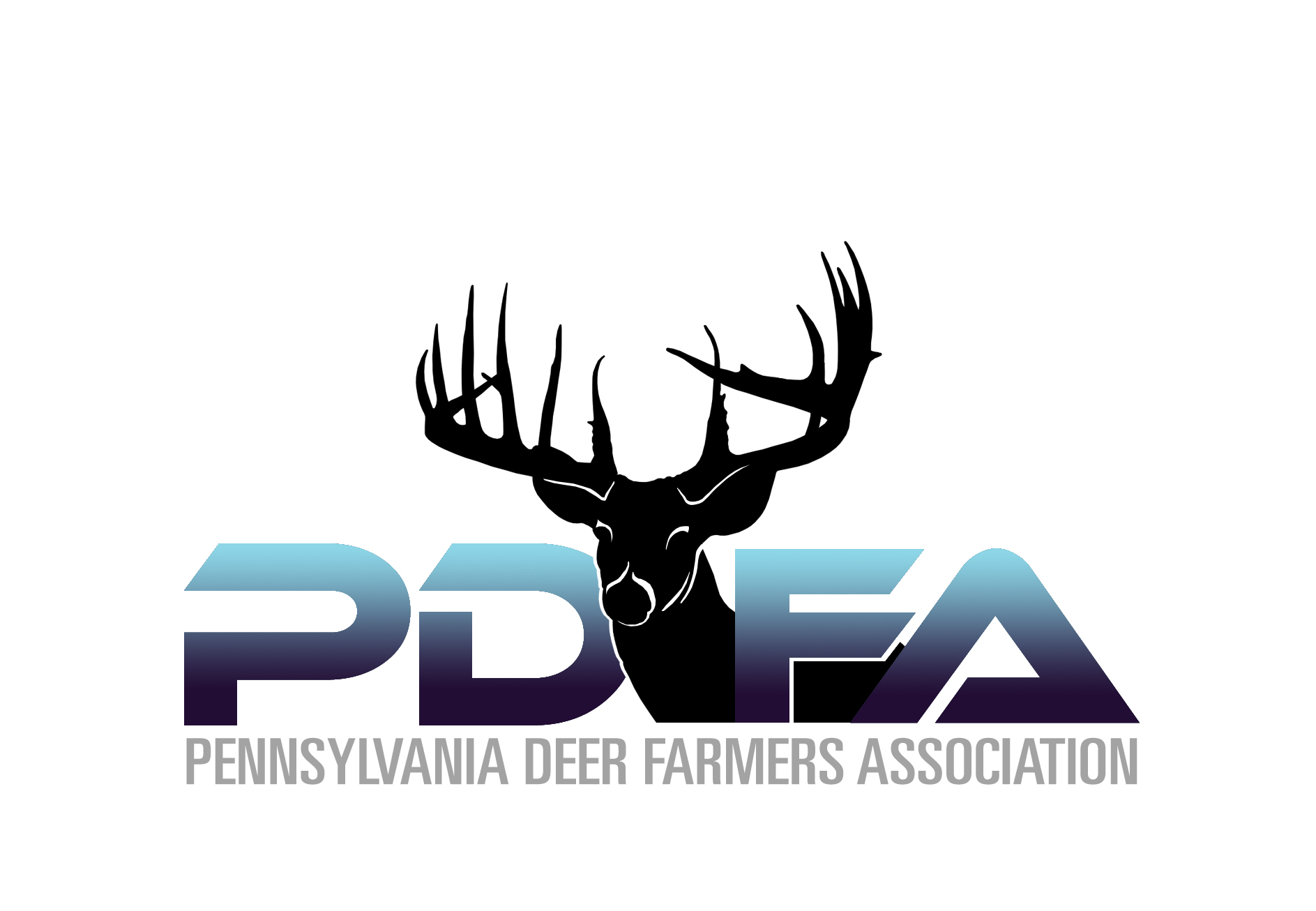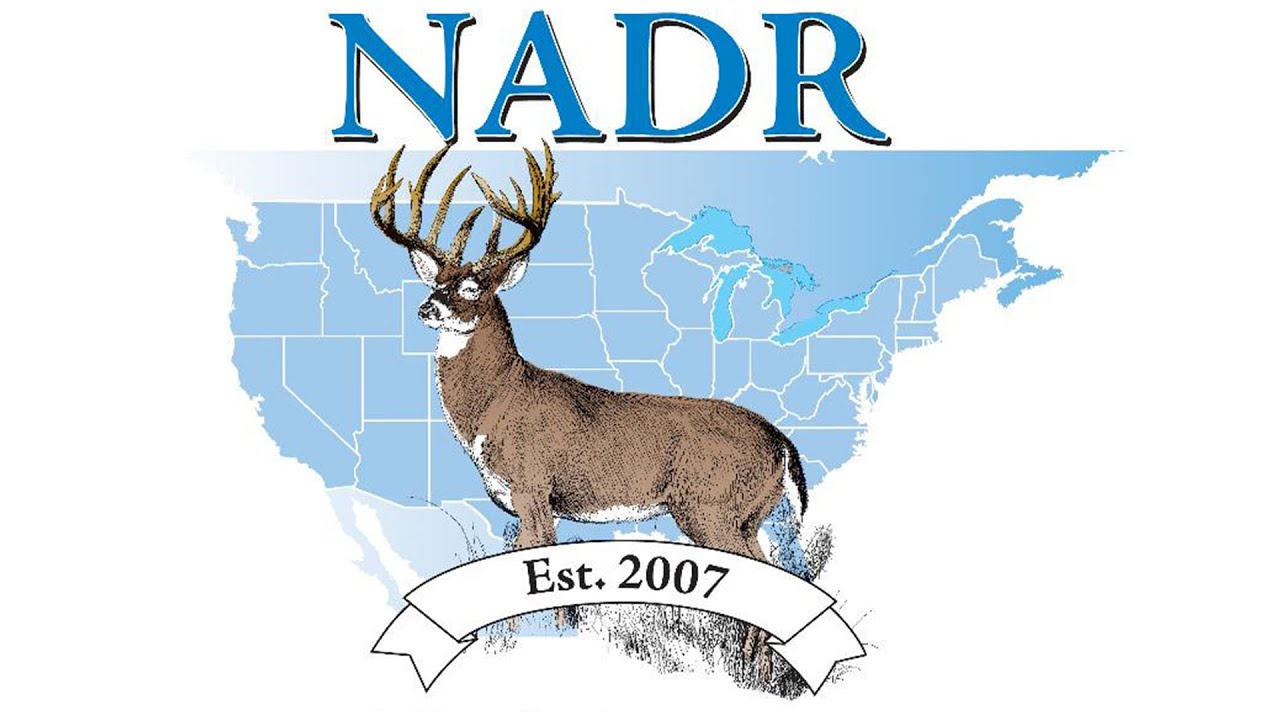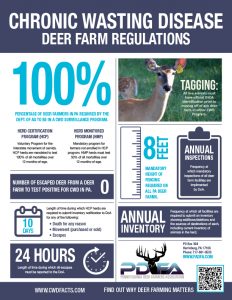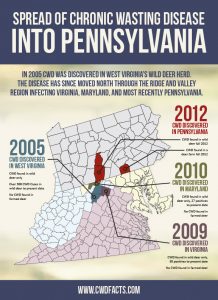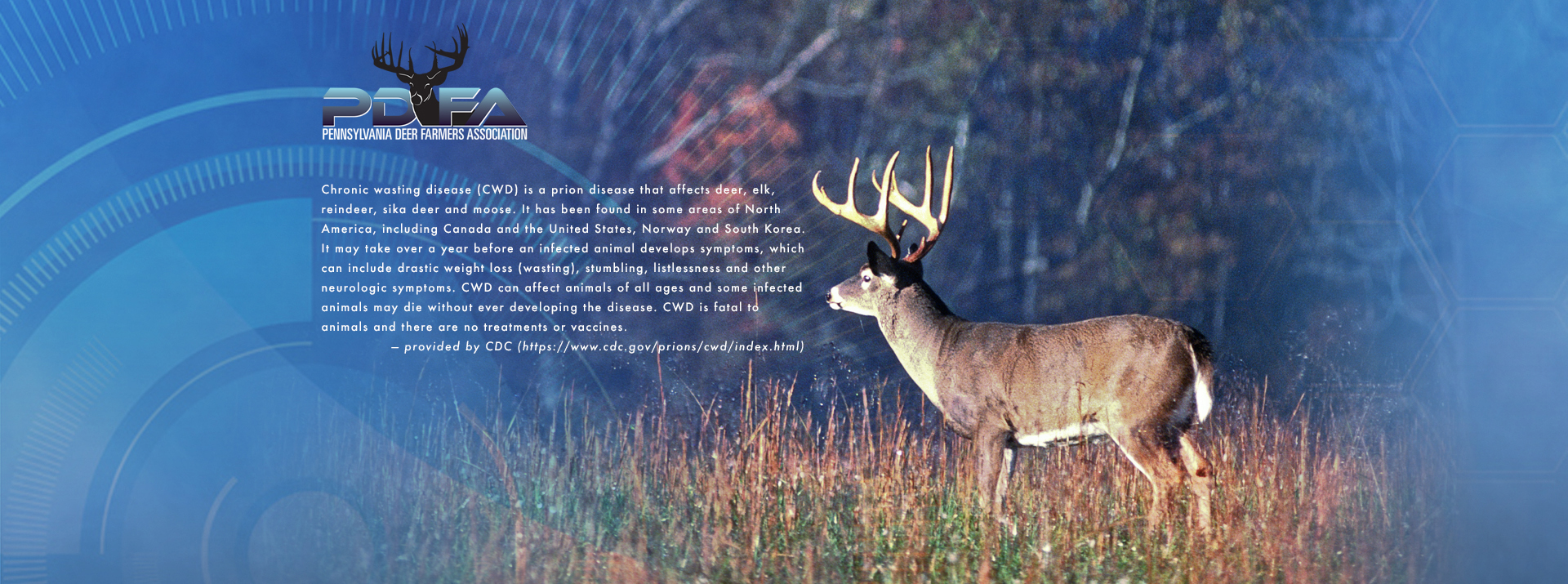

The PDFA Board Of Directors has secured all its membership a 50% discount for buck listings through the cwdbreeding.com website. If you have a buck you would like to pos a listing of, you can secure the promo code via the PDFA office.

Promising New Research on CWD
New findings show some deer are resistant to Chronic Wasting Disease.
Bowhunters and state wildlife agencies regularly cite Chronic Wasting Disease (CWD) as the leading threat to whitetails and whitetail hunting. For that reason, we should all be discussing CWD more.
As I detailed last year in my three-part series on CWD, our understanding of the disease and how to combat it — in both free-range and farmed deer populations — has largely been stagnant since researchers documented the neurological disease in mule deer in a state-owned captive facility in Colorado in 1967. A simple search for CWD-related research reveals that while there is no shortage of peer-reviewed studies, there really aren’t any solid answers. But thanks to two thought-leading researchers and some fascinating new technology, the game has recently changed!
Hereditary CWD Resistance
Genetic research has shown that CWD is heritable and susceptibility is predictable at the individual level. This highly significant development could play a huge role in how scientists understand CWD going forward and how we respond to the disease.
In his research published in 2020, Texas A&M University researcher Dr. Christopher Seabury revealed CWD is in fact heritable. In other words, an individual deer’s susceptibility to the disease is inherited, through genetic material, from its parents. As a result, some individuals are more durable when presented with the prion proteins that cause CWD, and these are the animals nature will select for as disease prevalence increases. This suggests reacting to CWD by aggressively removing all animals from the landscape, or depopulating farmed herds, could cause more harm than good by indiscriminately killing individuals highly resistant to CWD.
Seabury, with assistance from novel genetic testing technology and genetic profiles of sampled deer, learned he could predict — with greater than 80 percent accuracy — which animals were more susceptible to CWD. The technology Seabury customized is an array (a stored collection of variables) used to collect genome-wide DNA profiles from whitetails for mapping and machine learning. The technology allowed Seabury to genetically profile more than 200,000 naturally occurring genetic variances in whitetails to identify variations in CWD susceptibility!
Seabury then assigned a number to each animal in the study (roughly 800 deer) known as a “breeding value,” based on the individual’s susceptibility to CWD. This allowed Seabury to remove whitetails that were moderately to highly susceptible to CWD (low breeding values), leaving only those that possessed the desirable genetic makeup to survive in the presence of CWD (high breeding values). Through an educated selection process, known as genomic prediction, CWD prevalence within a herd will decline. This is huge news, because to date it is the only research that has actually shown viable results in reducing CWD within a given population!
Selective breeding via genomic prediction has given us hope whitetails absolutely can co-exist on the landscape with CWD. We now know CWD susceptibility in whitetails is passed from parents to their offspring. Interestingly, while this is the first time this technology has been applied to deer, it has been applied to cattle to predict the genetic qualities they will pass on to their offspring. Much of the food in your refrigerator and on your dinner plate is the end result of genomic prediction technology.
History Repeats Itself
Scientists have been through a strikingly similar process with a closely related disease in sheep, first recognized in the 18th century, known as scrapie. Scrapie is one of the very few reasonable explanations for the origin of CWD. The sheep scrapie program employed similar genetic technology as that used by Seabury, with similar reduced prevalence rates. The nationwide scrapie eradication program has resulted in a reduction in scrapie prevalence of roughly 85 percent!
With equally incredible, groundbreaking research, Dr. Nicholas Haley of Midwestern University and his colleagues have proven, with their own unique genetics-based methods, that they can apply genetic selection to reduce CWD prevalence in farmed whitetails. In a rare study, researchers cooperated with a privately owned deer-farming operation located in a region where CWD prevalence is high. Generally, farmed herds with high CWD prevalence are quarantined first and ultimately depopulated (all deer are killed). So, this study represents a unique opportunity to work one-on-one with the farm owner to develop a breeding program to reduce the frequency of highly susceptible genotypes (deer likely to contract CWD).
In Haley’s 2021 paper, he and his fellow researchers reported, “Tremendous progress was made towards reaching our primary objective: reducing the frequency of highly susceptible variants and increasing the frequency of less susceptible variants.”
Considering two years have passed since the researchers first reported their results, I decided to go to the owners of the farm and get an update on their progress. Co-owner Greg Flees reports, “So far, the results have been very encouraging.” Flees went on to say that while the farm has seen significant CWD infection among deer with the most susceptible genetic traits, other deer with traits identified as being highly resistant to CWD are thriving.
Flees continued to report on the results of their breeding program with optimism. “On one of our properties where CWD got bad from 2016-2018 we have seen amazing results,” he said. “We were able to eliminate the last highly susceptible animal from this property in 2021.”
If you’re not impressed yet, Flees finished by saying, “With a 2022 herd now comprised of animals that all have some level of CWD resistance, we were able to CWD-test 51 animals and 51 animals tested negative for CWD. We were able to take a property where CWD got really bad and, within a handful of years, get it to a point where none of the deer tested positive for CWD.”
Hope for the Future
Thanks to this genetic research by Seabury and Haley, we now know there are scientifically verified genetic mechanisms that reduce CWD susceptibility in whitetails. While this incredible research is being conducted in captive deer facilities, it does offer a sneak peak of how Mother Nature is likely to manage CWD in free-ranging deer. With captive deer and genetic testing at their disposal, Seabury and Haley were able to speed up the timeline significantly, but their research and the breeding practices it has spawned is tangible evidence that nature has a long-term road map for dealing with CWD and ensuring the long-term survival of whitetails.
The long-term survival of a species is a function of that species’ ability to adapt to environmental changes and diseases. As bowhunters, we are well aware whitetails are extremely resilient, highly adaptable creatures. I have no doubt natural selection will work favorably for whitetails. In the meantime, advanced research with modern technology helps provide clues about what’s in store for the most popular game animal in North America. Thanks to these pioneers, we now know that the future of CWD and whitetails can be found deep inside the genetic material of every single whitetail on the landscape.
